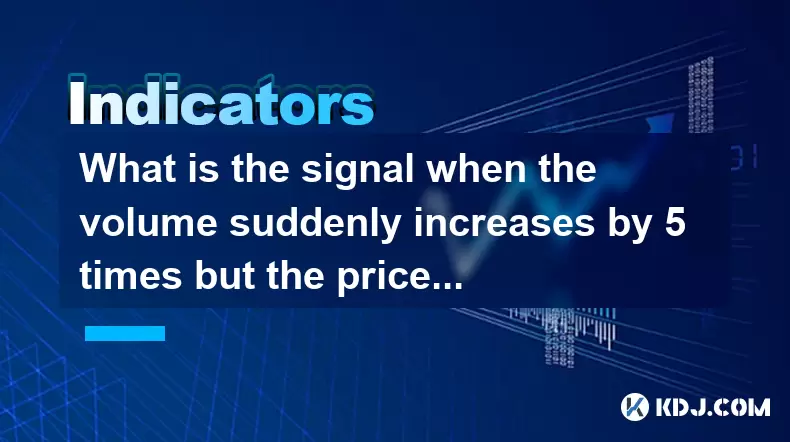-
 Bitcoin
Bitcoin $108,092.5658
-0.99% -
 Ethereum
Ethereum $2,546.4530
-1.12% -
 Tether USDt
Tether USDt $1.0000
0.01% -
 XRP
XRP $2.2676
0.12% -
 BNB
BNB $659.1616
-0.30% -
 Solana
Solana $148.8297
-1.97% -
 USDC
USDC $1.0000
0.02% -
 TRON
TRON $0.2874
-0.30% -
 Dogecoin
Dogecoin $0.1676
-3.64% -
 Cardano
Cardano $0.5765
-1.73% -
 Hyperliquid
Hyperliquid $37.2069
-6.18% -
 Bitcoin Cash
Bitcoin Cash $497.9918
-0.10% -
 Sui
Sui $2.8427
-2.26% -
 Chainlink
Chainlink $13.2689
-2.06% -
 UNUS SED LEO
UNUS SED LEO $9.0541
0.15% -
 Stellar
Stellar $0.2487
-0.92% -
 Avalanche
Avalanche $17.7710
-3.09% -
 Shiba Inu
Shiba Inu $0.0...01167
-1.28% -
 Toncoin
Toncoin $2.7488
-2.80% -
 Hedera
Hedera $0.1559
-2.28% -
 Litecoin
Litecoin $85.8945
-2.48% -
 Monero
Monero $316.0985
-2.09% -
 Dai
Dai $1.0001
0.02% -
 Polkadot
Polkadot $3.3481
-1.83% -
 Ethena USDe
Ethena USDe $1.0000
0.00% -
 Bitget Token
Bitget Token $4.2910
-3.04% -
 Uniswap
Uniswap $7.4131
-0.09% -
 Aave
Aave $280.9266
-2.67% -
 Pepe
Pepe $0.0...09816
-3.18% -
 Pi
Pi $0.4557
-2.29%
What is the signal when the volume suddenly increases by 5 times but the price only fluctuates slightly?
Jun 30, 2025 at 05:42 am

Understanding Volume and Price Relationship in Cryptocurrency
In the world of cryptocurrency trading, volume and price are two of the most important indicators used to understand market behavior. Volume refers to the total amount of a cryptocurrency traded over a specific time period, while price reflects the current value at which the asset is being bought or sold. Typically, these two metrics move together — rising prices are often accompanied by higher trading volumes, and vice versa.
However, there are situations where this correlation breaks down. One such anomaly is when the volume suddenly increases by 5 times but the price only fluctuates slightly. This unusual pattern can signal various underlying dynamics within the market that traders need to interpret carefully.
Key Takeaway: A sudden surge in volume without a significant price movement suggests hidden market forces at play.
Possible Interpretation: Accumulation or Distribution Phase
When a cryptocurrency experiences a sharp increase in trading volume with minimal price change, it could indicate either accumulation or distribution by large players (often referred to as "whales"). During the accumulation phase, smart money investors buy up assets quietly without pushing the price up too much. Similarly, during distribution, big holders may be offloading their holdings gradually to avoid causing panic or drawing attention.
These phases are usually characterized by tight price ranges and high volume, forming what is known as a consolidation zone. In such zones, neither buyers nor sellers dominate, leading to sideways price action despite increased activity.
- Accumulation: Large buyers enter the market without triggering upward momentum.
- Distribution: Major holders sell off positions subtly to avoid a price drop.
This kind of behavior is common before major price breakouts or breakdowns.
Another Perspective: Market Indecision or Institutional Activity
A scenario where volume spikes but the price remains flat might also reflect market indecision. Traders are active, but they’re not agreeing on the next direction. Some are buying, others are selling, resulting in a tug-of-war that keeps the price range-bound.
Additionally, institutional traders sometimes engage in block trades or use dark pools to execute large orders without moving the market. These trades don't always appear on regular order books but contribute significantly to overall volume.
- Indecision: Buyers and sellers cancel each other out, keeping price stable.
- Institutional activity: Large-scale transactions executed off-market, boosting volume silently.
Such patterns require close monitoring as they may precede a strong directional move once consensus forms.
Technical Analysis: Identifying Patterns Through Charts
From a technical standpoint, analyzing candlestick charts becomes crucial in identifying the implications of this volume-price divergence. A candlestick chart showing a long lower shadow with high volume may suggest strong support levels being tested. Conversely, a long upper shadow may indicate resistance being met with heavy selling pressure.
Traders should look for:
- Candle wicks: Long shadows signaling rejection of certain price levels.
- Volume bars: Confirming whether the volume aligns with the candle’s body or shadows.
For example, if a candle has a small real body but extremely high volume and long wicks, it indicates that the market is testing both support and resistance aggressively without a clear winner yet.
How to Respond to This Signal
Recognizing this signal is one thing, but knowing how to act on it is another. Here’s a step-by-step guide on how to approach such a situation:
- Confirm the trend: Determine whether the asset is in an uptrend, downtrend, or consolidation phase prior to the volume spike.
- Check key support/resistance levels: Use horizontal lines or Fibonacci retracements to identify critical zones around which the price is consolidating.
- Use additional indicators: Combine volume data with tools like RSI, MACD, or Bollinger Bands to confirm possible reversals or continuations.
- Wait for a breakout: Avoid entering trades prematurely. Wait until the price decisively moves above resistance or below support to confirm the new direction.
- Set stop-loss orders: Due to the uncertainty, place protective stops to manage risk effectively.
By following these steps, traders can position themselves to capture potential moves without getting caught in false breakouts.
Frequently Asked Questions
1. Can high volume with low price movement indicate manipulation?
Yes, especially in less liquid markets. Large entities may create artificial volume to mislead retail traders into thinking there's more interest than there actually is. Always cross-reference with order book depth and trade history to verify legitimacy.
2. Should I ignore a stock/crypto if volume surges but price doesn’t move?
Not necessarily. It depends on your trading strategy. If you're a short-term trader, it might not offer immediate opportunities. However, if you're a swing or position trader, this could be a sign of upcoming volatility worth watching closely.
3. How does this volume-to-price relationship differ between traditional markets and crypto?
Crypto markets operate 24/7, which means volume can come from different global regions at any time. Traditional markets have fixed hours and more regulated environments. Also, crypto markets are generally more volatile and susceptible to rapid shifts in sentiment and whale activity.
4. Is there a way to measure the strength of the volume surge beyond just comparing it to average volume?
Yes, using tools like the On-Balance Volume (OBV) indicator or comparing the current volume to the average volume over a 20- or 50-period window can help assess the significance of the surge. Additionally, observing how price reacts after the surge provides context about its impact.
Clause de non-responsabilité:info@kdj.com
Les informations fournies ne constituent pas des conseils commerciaux. kdj.com n’assume aucune responsabilité pour les investissements effectués sur la base des informations fournies dans cet article. Les crypto-monnaies sont très volatiles et il est fortement recommandé d’investir avec prudence après une recherche approfondie!
Si vous pensez que le contenu utilisé sur ce site Web porte atteinte à vos droits d’auteur, veuillez nous contacter immédiatement (info@kdj.com) et nous le supprimerons dans les plus brefs délais.
-
 ICNT Échangez maintenant
ICNT Échangez maintenant$0.3182
30.31%
-
 M Échangez maintenant
M Échangez maintenant$0.2011
23.43%
-
 SOLO Échangez maintenant
SOLO Échangez maintenant$0.3788
17.55%
-
 HSK Échangez maintenant
HSK Échangez maintenant$0.7010
17.49%
-
 SHX Échangez maintenant
SHX Échangez maintenant$0.0116
15.42%
-
 COREUM Échangez maintenant
COREUM Échangez maintenant$0.1392
8.59%
- Bitcoin Solaris Market Launch: A New Dawn or Just Another Altcoin?
- 2025-07-08 20:30:12
- Bitcoin, Memecoin Mania, and the All-Time High Hunt: What's Next?
- 2025-07-08 20:30:12
- Byrq Coin: Scam or Savior? A Deep Dive Review
- 2025-07-08 20:50:12
- Shiba Inu's Burn Rate Bonanza: Can Crypto Burns Ignite a Price Rally?
- 2025-07-08 20:50:12
- XLM Price Prediction: Is Stellar Ready for a Breakout?
- 2025-07-08 19:10:13
- Memecoin Mania: V2EX, Pump.fun, and the Wild West of Crypto
- 2025-07-08 19:50:12
Connaissances connexes

How to trade Dogecoin based on funding rates and open interest
Jul 07,2025 at 02:49am
<h3>Understanding Funding Rates in Dogecoin Trading</h3><p>Funding rates are periodic payments made to either long or short traders ...

What is the 'God Mode' indicator for Dogecoin
Jul 07,2025 at 04:42pm
<h3>Understanding the 'God Mode' Indicator</h3><p>The 'God Mode' indicator is a term that has emerged within cryptocurrency trading ...

Using Gann Fans on the Dogecoin price chart
Jul 07,2025 at 09:43pm
<h3>Understanding Gann Fans and Their Relevance in Cryptocurrency Trading</h3><p>Gann Fans are a technical analysis tool developed b...

How to spot manipulation on the Dogecoin chart
Jul 06,2025 at 12:35pm
<h3>Understanding the Basics of Chart Manipulation</h3><p>Chart manipulation in the cryptocurrency space, particularly with Dogecoin...

Dogecoin market structure break explained
Jul 07,2025 at 02:51am
<h3>Understanding the Dogecoin Market Structure</h3><p>Dogecoin, initially created as a meme-based cryptocurrency, has evolved into ...

How to backtest a Dogecoin moving average strategy
Jul 08,2025 at 04:50am
<h3>What is a Moving Average Strategy in Cryptocurrency Trading?</h3><p>A moving average strategy is one of the most commonly used t...

How to trade Dogecoin based on funding rates and open interest
Jul 07,2025 at 02:49am
<h3>Understanding Funding Rates in Dogecoin Trading</h3><p>Funding rates are periodic payments made to either long or short traders ...

What is the 'God Mode' indicator for Dogecoin
Jul 07,2025 at 04:42pm
<h3>Understanding the 'God Mode' Indicator</h3><p>The 'God Mode' indicator is a term that has emerged within cryptocurrency trading ...

Using Gann Fans on the Dogecoin price chart
Jul 07,2025 at 09:43pm
<h3>Understanding Gann Fans and Their Relevance in Cryptocurrency Trading</h3><p>Gann Fans are a technical analysis tool developed b...

How to spot manipulation on the Dogecoin chart
Jul 06,2025 at 12:35pm
<h3>Understanding the Basics of Chart Manipulation</h3><p>Chart manipulation in the cryptocurrency space, particularly with Dogecoin...

Dogecoin market structure break explained
Jul 07,2025 at 02:51am
<h3>Understanding the Dogecoin Market Structure</h3><p>Dogecoin, initially created as a meme-based cryptocurrency, has evolved into ...

How to backtest a Dogecoin moving average strategy
Jul 08,2025 at 04:50am
<h3>What is a Moving Average Strategy in Cryptocurrency Trading?</h3><p>A moving average strategy is one of the most commonly used t...
Voir tous les articles

























































































